
Along the side of the road that leads to the Santa Rosa mansion “La Casona”, there is a piece of original dry forest, probably the only one we will get to see in our lifetimes. Guanacaste Conservation Area (ACG) research coordinator Roger Blanco says that here, surrounded by guapinol (West Indian locust or stinking toe), níspero (loquat) and cortez amarillo (golden trumpet) trees, the temperature drops by 5 degrees Celsius (a 9-degree drop in Fahrenheit). We sweat less.
A dry forest is not a handful of dead or dry tree trunks. It is actually a green space, full of life. This little patch proves it. It is a microclimate that transports us back hundreds of years ago, when livestock and agriculture had not yet wiped out most of the dry forest in the province. But it is not and will not be easy to find something like it in the rest of Mesoamerica (which goes from southern Mexico to Costa Rica).
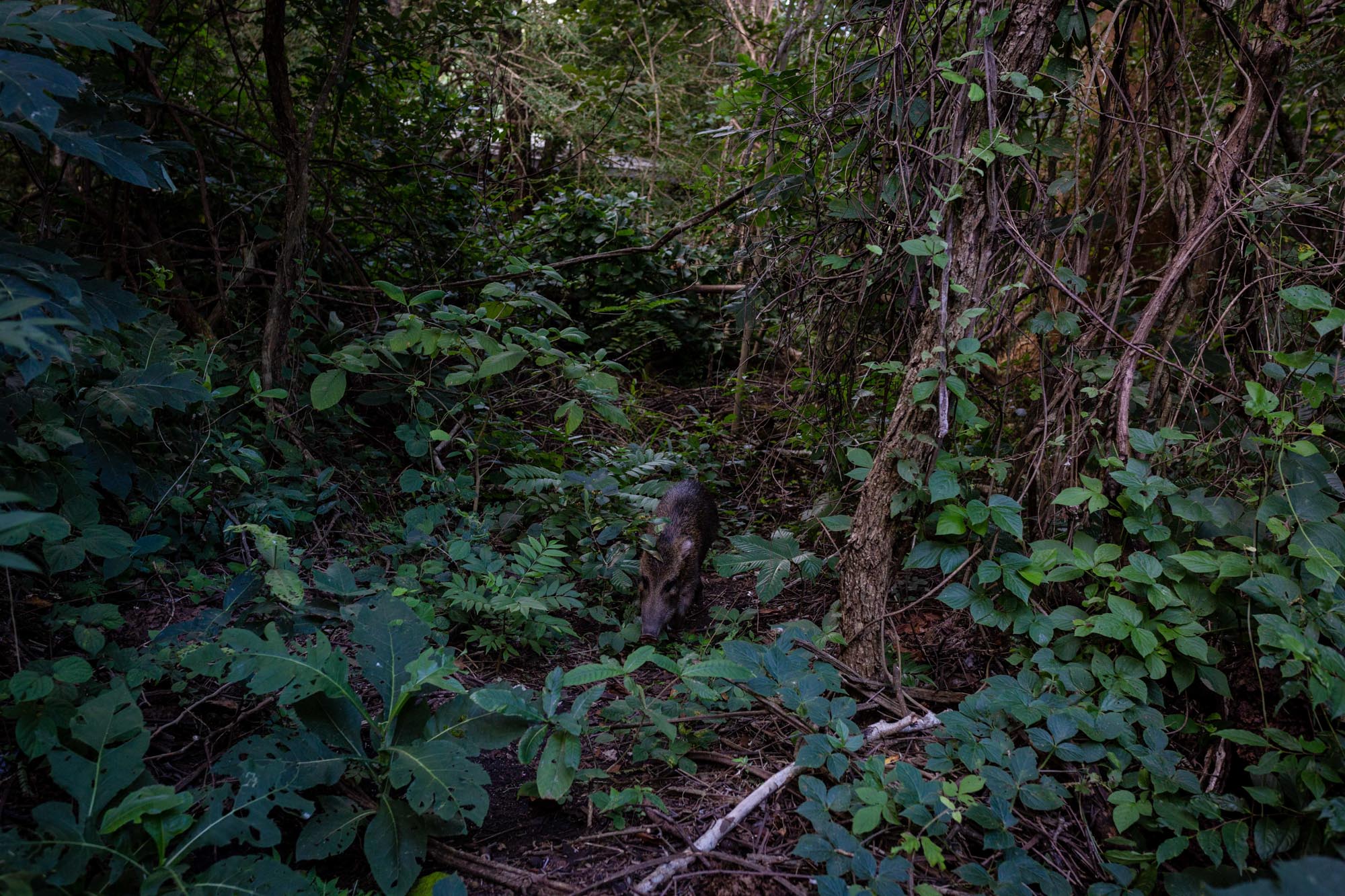
A young peccary, rescued from the hunters, walks calmly through the Santa Rosa dry forest. Cesar Arroyo.
In order for a recovered dry tropical forest to regenerate, it will need 200, 300, 400 years… and it might not ever succeed, says Blanco, holding his hat with one hand and making sweeping gestures with the other.
Twelve years ago, when he led group discussions and brought them to this same patch, Blanco told them that the rest of the dry forest would look like this in hundreds of years. Now he sees it as almost impossible. The impact of increasingly higher temperatures and all the climate change predictions lead him to think that the conditions for something similar to develop no longer exist.
In fact, the ACG has reported that the amount of insects in the forest is decreasing drastically and even the strongest trees, such as Spanish cedar, are beginning to die in the most extreme drought events.
Although there are other dry forests in Costa Rica, Blanco has no doubt that the ACG is our last hope to save and restore “in perpetuity” what remains of the dry ecosystem from Mexico to Costa Rica. Why? The story begins with two “crazy” scientists who count the forest’s insects.
“Crazy” People in the Dry Forest
Ecologist Daniel Janzen carries an American passport in a shirt pocket and two clothes pins in the other. These same pins are used by caterpillar and insect collectors— parataxonomists, forest counters— to seal the bags in which they keep the bugs to count them later.
Blanco says that when Janzen and his colleague and wife Winnie Hallwachs proposed restoring Santa Rosa’s dry forest more than 35 years ago, the rest of the scientists thought that was impossible and that they were crazy. “They only thought that was possible with rainforests.”
Probably no one in Latin America has studied insects in a specific area as much or as systematically as Janzen and Hallwachs. They figure that if they added together all the years that each of them has spent in the forest, it would total about 109.
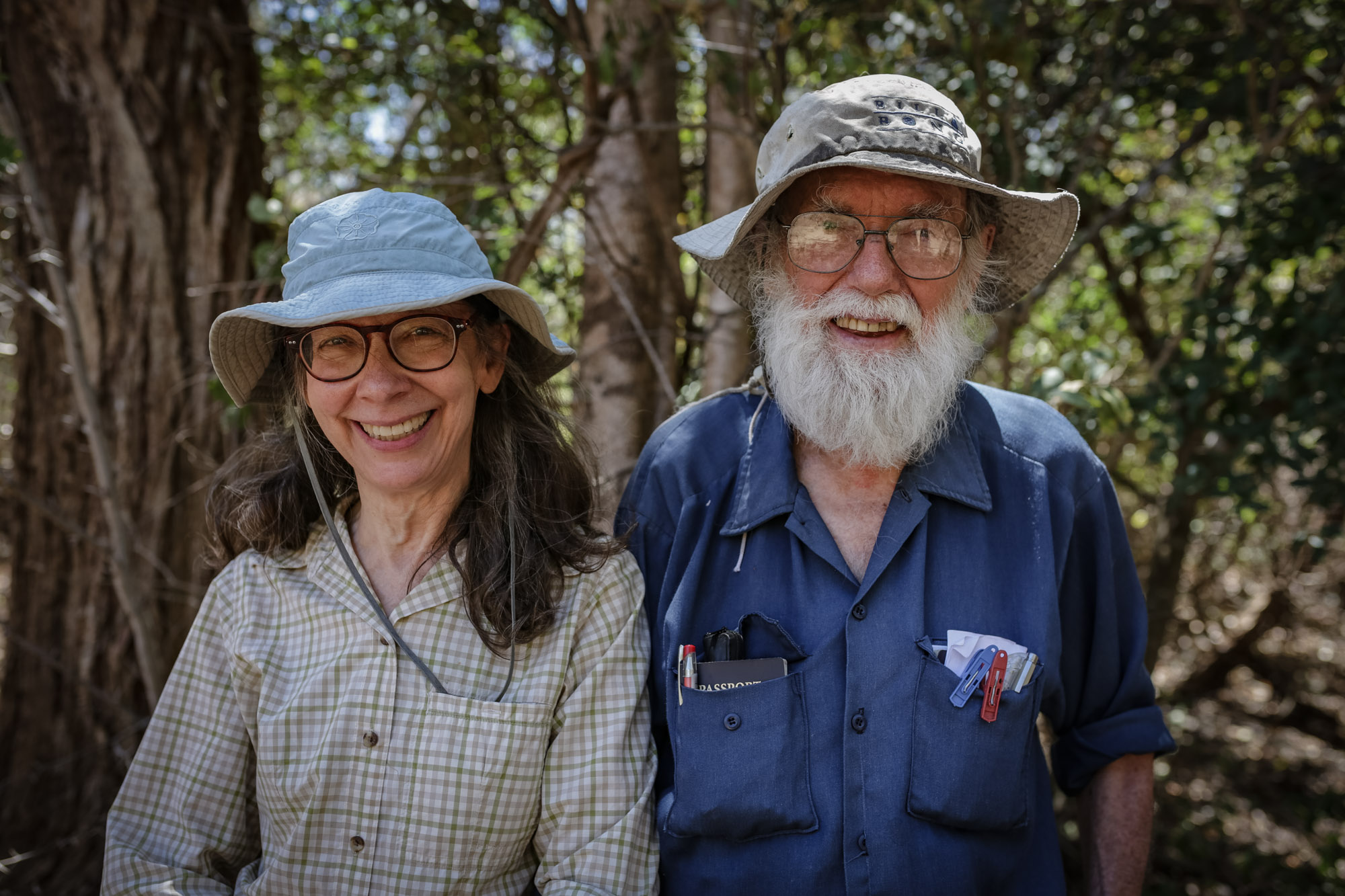
Winnie Hallwachs and Daniell Janzen are a kind of parents of the dry forest of Costa Rica. They say that between the two they already have 109 years living inside the forest. Photo: César Arroyo.
This is precisely how Janzen begins his presentation to a group of students and journalists who visited the ACG in February as part of the climate change and resilience course organized by The Voice.
“They are two walking legends,” one of the workshop participants remarked later. It is a fairly accurate statement. This pair of scientists is in good measure responsible for the creation of the Guanacaste Conservation Area, the only area in Costa Rica that has the four types of forest within its ecosystem: dry, wet (rainforest), cloud and marine all within 169,000 protected hectares (about 417,000 acres).
This “biological connectivity” between ecosystems, in large, united blocks, makes them stronger and more resilient to climatic beatings. That is why Blanco insists that it is our last realistic hope of saving the dry forest from a devastating future due to rising temperatures.
But first let’s get an overview of the place where we are. The state protected Santa Rosa National Park in 1966, especially to preserve the mansion (la Casona, in Spanish), a symbol of the National Campaign of 1856. But the true feat of forest protection would begin a few years later.
In their latest article “Converting a tropical national park to conservation via biodevelopment,” published in BioTropica magazine, Janzen and Hallwachs explained that their main concern was fires. In the early 80s they had been in Australia and saw the impact of endless fires on dry tropical forests. That put them on alert. The same thing would happen to Guanacaste’s forests if they did nothing.
In 1984, a Swedish publication interviewed him when he received the Crafoord Prize for his coevolutive studies. The journalist asked him: “What are you doing for conservation?” and Janzen replied, “Nothing.” But then he added, “but if you want to raise funds for conservation, I can get them to other people who do that.”
The journalist included an account number in the article and six months later, sent them $25,000 in donations from Swedish citizens to buy forest land. The Crafoord Prize had given them $100,000. All together, they managed to buy the 395 hectares of “Finca Jenny” in the northeast corner of Santa Rosa to protect it for life.
And they have continued doing that, little by little. In 1985 Janzen presented the idea of creating what they then imagined as “a large estate” to a group of amateur conservationists in the United States and no one paid any attention, but a young professional Costa Rican who worked for The Nature Conservancy (TNC), who was present at the presentation, ended up helping them funnel US donation funds for the restoration project through TNC, making it tax-deductible.
Janzen and Hallwachs also presented the project to organizations and governments in Costa Rica. In their article, they relate that then President Oscar Arias told them, “It sounds good as long as it doesn’t cost us anything.” But all they were looking for was “political permission” to continue their pilgrimage through institutions.
That was just the beginning. Then there would be years of agreements, bureaucracy and big negotiations with neighboring farmers.
“It has been a process of almost 40 years of work, almost 350 properties to put together this entire protected forest, an investment of $110 million, more than 16,000 different donors… even children in Japan selling bread in schools to buy a hectare of forest in the ACG,” related Roger Blanco, trying to summarize a lifetime in a single sentence. And the process is not over.
The House Burns
The parataxonomists became Winnie and Dan’s family, as they affectionately say in the forest. More than 150 people work with the ACG. Of them, 36 people from the community are dedicated to finding caterpillars and other insects to count them or take them to the eleven hatcheries they have.
The findings from recent years have been able to demonstrate the damage to the forest from climate change. “Biodiversity is a sensor,” said Janzen. In 1984, when they put out a sheet with reflectors in the middle of a night with a new moon, the amount of insects that arrived covered it completely. Something similar happened until 2007, but in 2019 just a few insects showed up.
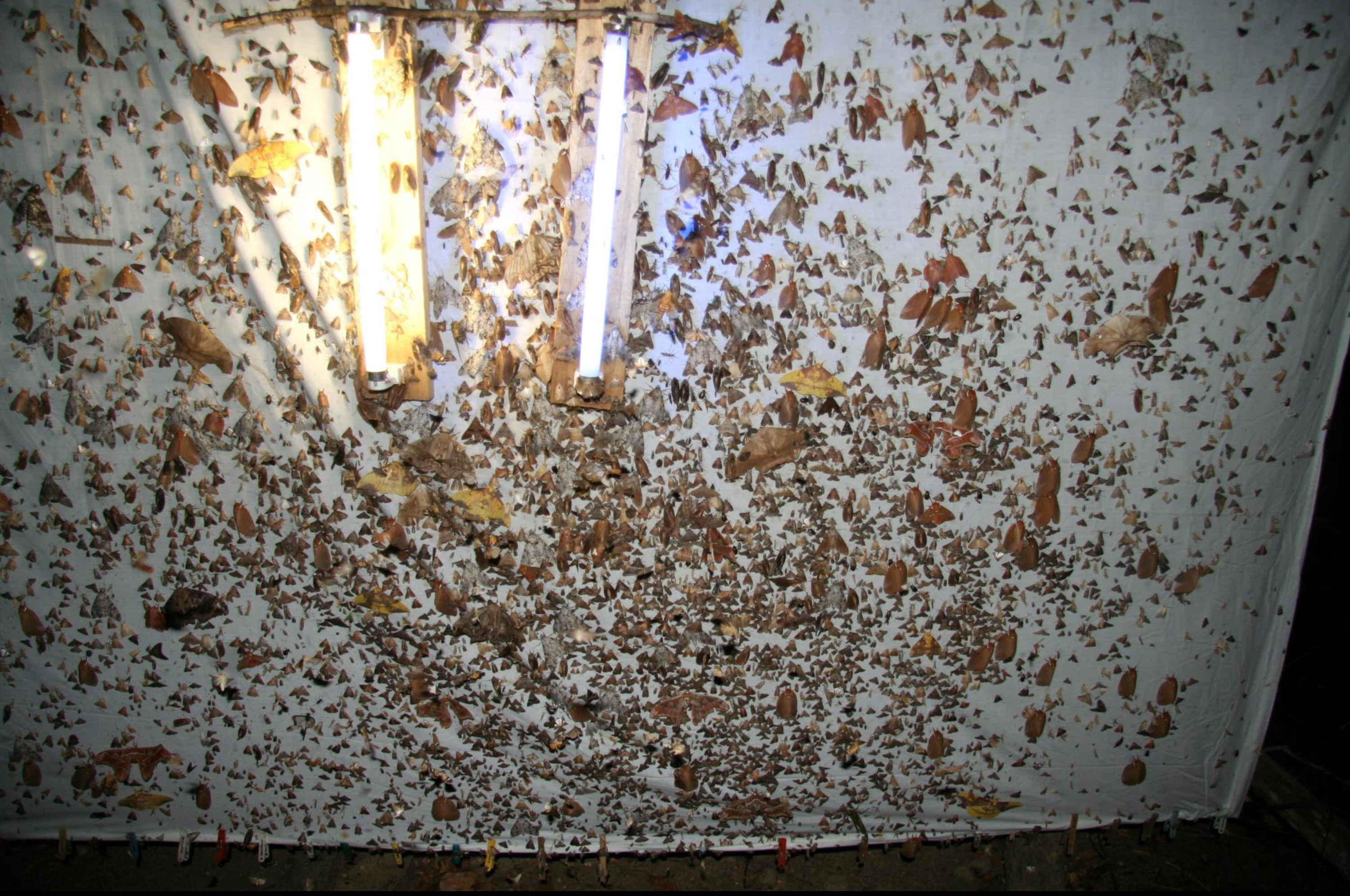
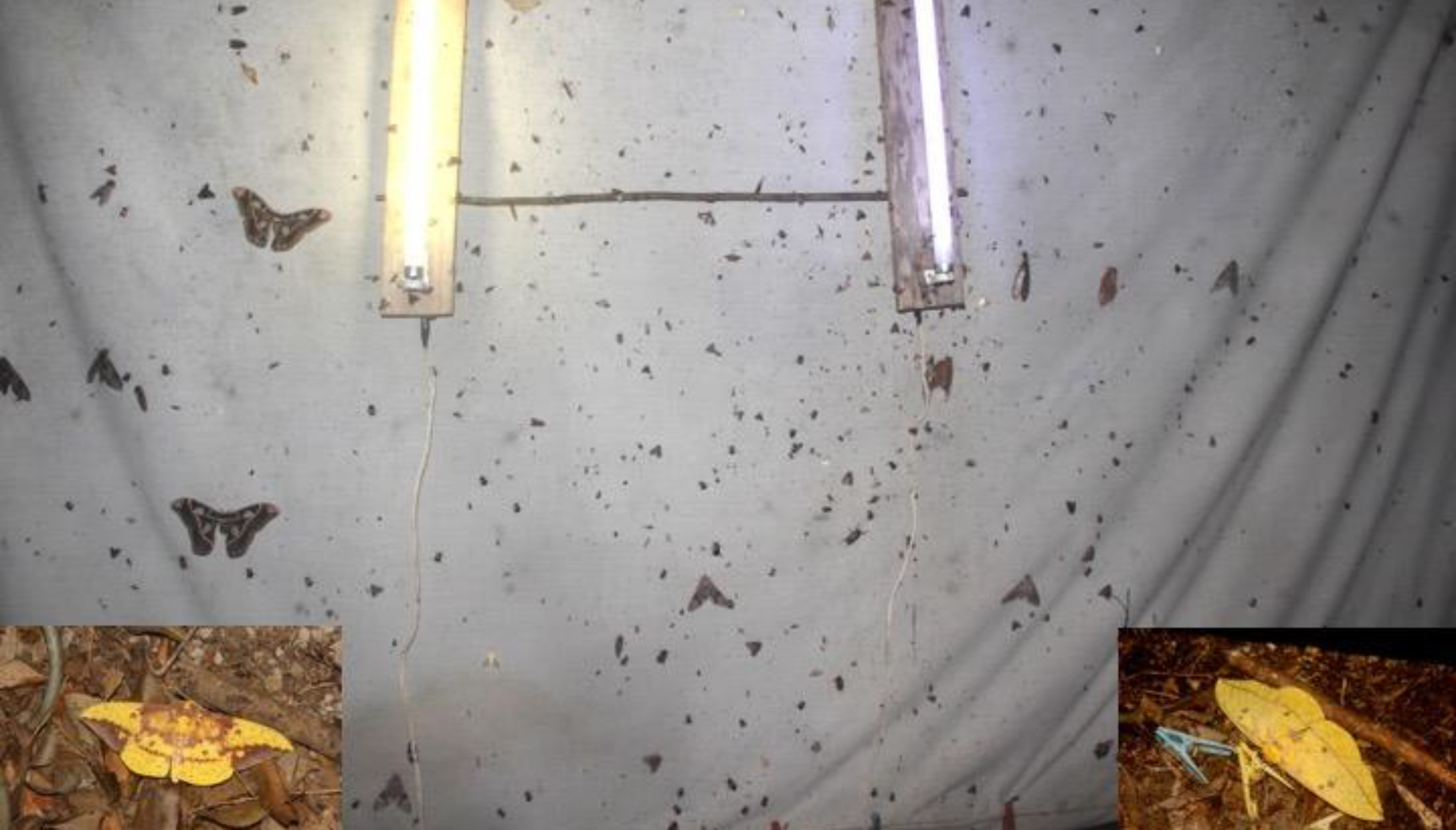
“We have returned from the field without one larva,” says one of the parataxonomists during Janzen’s presentation.
Seeing the image for the first time, narrated by the 80-year-old scientist, opens a wound in the conscience of those who are listening. Tears roll down some cheeks. He continues and shows us more graphics. Although the amount of parataxonomists has stabilized at more than 30 since 2005, the number of caterpillars found fell from about 50,000 that year to 20,000 in 2019.
It’s a chain reaction. Along with the number of caterpillars, the number of parasites also falls. According to Janzen, they are essential to achieving an ecological balance in agriculture. And the number of birds who come from the north to seek warmth in Costa Rica is also affected since they do not find something to eat.
Blanco adds other effects of climatic events on the ecosystem. In 2015, Guanacaste had the lowest rainfall in the last hundred years. The drought caused “robust” trees like Spanish cedar and loquat to suffer such water stress that they died. In the ACG research plots, forest mortality went from the usual 2% to 8% that year.
When you make bread in the oven, you set the temperature to 180 degrees [Celsius] (350 F). If it is set at 187 degrees [Celsius] (370 F), the bread rises and burns because it is at the limit. The same happens in the dry forest. Dry forest species are at their tolerance limit,” explained Blanco.
In the absence of food, some monkeys stopped reproducing during the drought and the young ones that were born died because the females had no milk to feed them.
It was an extreme event that scientists have not yet managed to relate to climate change, said Lenin Corrales, a researcher at the Tropical Agronomic Center for Research and Education. But it is a good guide to think about what the world will be like when temperatures rise even more.
ACG’s good fortune is that the connectivity between ecosystems allows some species to begin to migrate to higher areas, where they find their usual temperature. Some trees manage to get water to reach their leaves faster, and they don’t die, so they are adapting.
That leads us to other lines. If we are going to restore or plant trees, it isn’t just any tree we are going to plant in these conditions. We have to turn our attention to trees that can survive in these new conditions,” explained Blanco.
The picture seems bleak and unbearable to the participants after the talks by the three specialists, but we also consider it realistic. Although much of climate change does not depend on what decisions a single individual makes, restoring and conserving the dry forest feels like an urgency after listening to them.


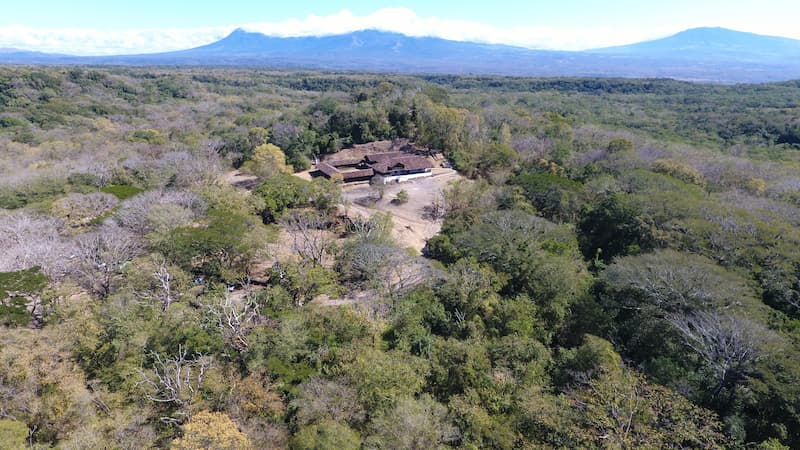




Comments